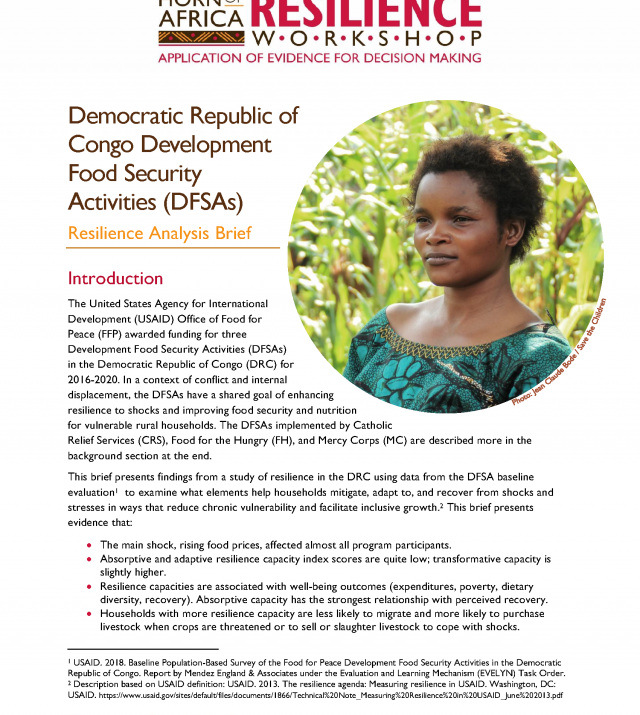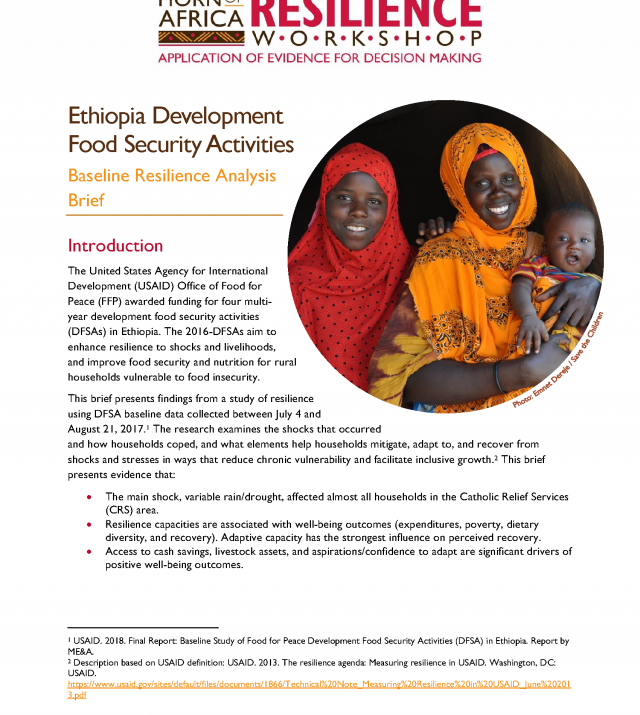
Horn of Africa - Using Resilience Data for Programming Decisions Workshop Final Report

Introduction
The “Horn of Africa – Using Resilience Data for Programming Decisions Workshop” was developed to promote the use of monitoring and evaluation (M&E) information for programmatic decision making. There is an increased recognition of the need to shift our mindsets around the possibilities provided to us by the resilience data being generated, and the need to strengthen the necessary capacity to use these data to inform and improve programming decisions and to adaptively manage projects.
The workshop was intended to build the capacity of resilience program and M&E staff from USAID and implementing partners (IPs) to use resilience data to inform programming decisions and to adaptively manage their projects. At the end of the workshop, participants had actively engaged towards achieving the following outcomes:
• Reviewing the resilience measurement concepts and framework adopted by USAID/TANGO;
• Learning about findings on strengthening resilience throughout the Horn of Africa;
• Better understanding learning principles behind identifying program implications from data sources;
• Identifying and prioritize knowledge gaps to be explored in future analysis; and
• Participating in a practical session in the field.
While one of the goals was to encourage using evaluation evidence to inform decision making through USAID’s Collaborating, Learning, & Adapting (CLA) principles, this learning was promoted through a collaborative sense-making process. The sense-making exercises were framed around activities that would address the following:
1. Interrogating the data – “what does the data tell us?” “What is surprising?” “How do we interpret the data?”
2. How are the programs supporting resilience capacities identified in these analyses and how do we use M&E and feedback loops towards these goals?
3. What is missing from the analysis that is essential for decision making? Can we leverage existing data or do we need to collect new data?

